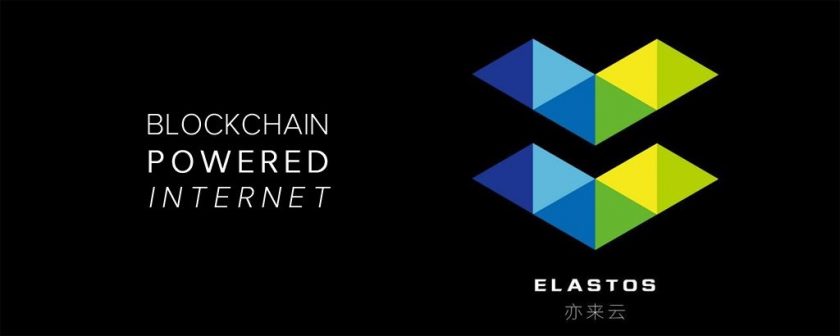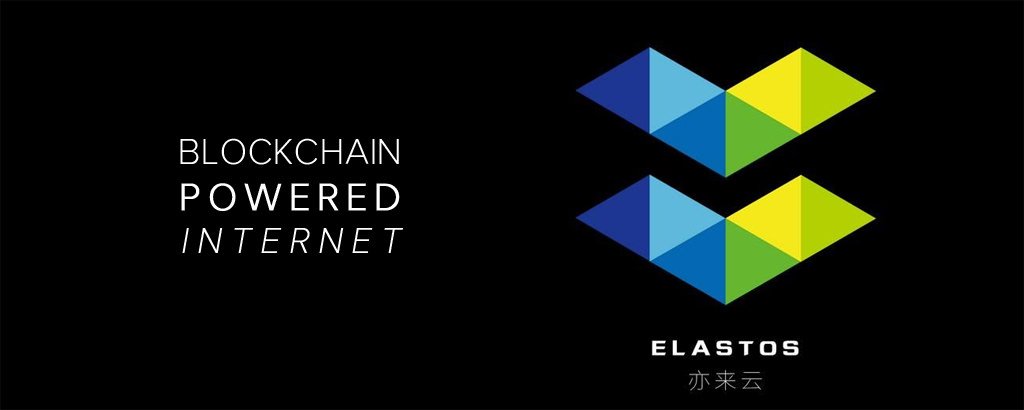When New College alum Steven Lubka (‘13) started learning about cryptocurrency, he unknowingly agreed to take a journey into a new innovative space which would end up employing him. In fact, Lubka currently has three different positions–two of them for internationally based firms–and his most recent role as a marketing consultant for a new Chinese-based cryptocurrency project called Elastos has him especially excited.

(Photo courtesy of Elastos)
“I got involved in the space about a year ago, and when I discovered it I became totally obsessed,” Lubka said. “I spent everyday researching how this tech works, what sort of designs people are doing, the different kinds of projects and their application. And since most of this info is not found in a class–he discovered that you not only have to teach yourself but you really have to come to your conclusions about if any given piece will work or not. Because it’s such an emerging field there’s not, even among people who are educated in how all of this works, a clear consensus on what this is, how it’s going to turn out, or even the definition of what a blockchain is. Everyone has their own definition of what constitutes a blockchain and how valid various implementations are.”
Without the obligation for titles or credentials–none exist–the crypto space offers its opportunities for work for those who understand the technology, the markets and have something to offer.
Lubka says that it is very unique experience to participate in a space that is so new, but is already having such large effects. Without an established guide, those who are participating to further distributed ledger technology evolution must rely on their own perspective.
“And I think about that a lot,” Lubka said. “I love it because if you want to enter into cryptocurrency and blockchain, being in the space means being able to think from first principles. To work in cryptocurrency means you have to be able to think for yourself. You have to be able to generate your own frameworks for how to evaluate these things and discover for yourself how these things work.”
Lubka also adds that the knowledge and expertise needed for the new crypto space is a wide net. Cryptocurrency takes a multidisciplinary approach to solve solutions, combining economics, computer science, psychology, politics and more into areas of methodological concern. One reason why crypto inherently deals in politics, for example, is because cryptocurrency projects inherently challenge the status quo and offer a new economic system to a world with a rigid idea of how money, trade and governance works.
“This sector really requires you to think for yourself, and to be able to synthesize new information. Some of the most brilliant people in the world getting into this,” Lubka said. “People are quitting jobs at Goldman Sachs or other big financial institutions and making startup companies. Coinbase, the most popular cryptocurrency to fiat exchange is taking off. Binance, another popular cryptocurrency exchange, just made more money than Germany’s largest bank, Deutsche bank–Binance just made a higher profit for the entire year of 2017.”
Lubka notes that many people in the space are rushing along with a lot of assumptions, but he holds that it is still important to listen to the burgeoning internet community centered around crypto-info dissemination. Lubka told the Tangent that computer scientist and popular crypto-public spokesperson, Andreas Antonopoulos has continued to inform the inquisitive general public about the space. Others like Antonopoulos are intimately bent on teaching the core elements of what makes up the current crypto space and where new projects are heading–like muses of ones and zeros.
“I have three main positions in the crypto space,” Lubka said. “I am a private adviser for a venture capital firm in Sarasota. I consult with the firm whenever it is dealing with a blockchain based project. They contact me and I give them my insight. I am also an Initial Coin Offering (ICO) analyst for Block Pulse in Paris, France. They help companies launch ICOs, help the ICO’s market their token sale, connect ICOs with exchanges and investors and they give advice on organization and operation. They send me projects, I read through them. I take a look at the technology, the token-economics or ‘tokenomics,’ which is among the main things that this sector is grappling with right now.”
From what he has gathered as an ICO analyst, Lubka expects to see a restructuring of how “utility tokens” operate this year, a change which would consolidate the wash of tokens that entered the scene in 2017.
Elastos, a new crypto project with far horizons
“My final job is working for Elastos, which is a cryptocurrency project with their own blockchain and their own cryptocurrency,” Lubka said. “It’s actually ‘merge mined’ from Bitcoin. This means it works with the Bitcoin (BTC) network, and the BTC miners can simultaneously secure the Elastos network without using anymore power or additional computers.”
Lubka explained that Bitcoin is a proof of work network–a reference to its “consensus algorithm” which differentiates blockchain types–which means it is secured by performing electrically expensive computation in order to secure the network. But Elastos is able to secure their entire decentralized blockchain, with the same level of decentralization and security as Bitcoin, with zero additional electricity by simply running it off the Bitcoin network. And this can be done in an infinite way–you can run an infinite amount of networks off the BTC network, like gears connected to a master gear. This, Lubka explained, is one powerful innovation that Elastos brings to crypto-evolution. One proof of work network can effectively run countless other block chains.
“There is a strong argument to have one network which performs computation in the way BTC does,” Lubka said. “We don’t need a multitude of proof-of-work network, one will do fine. We can run many networks based on the security of a single proof-of-work network.”
Lubka warns the public about the narrative of Bitcoin’s excessive energy use.
“Bitcoin is not as large of an environmental issue as people think,” Lubka said. “Additionally, the Bitcoin network will not continue to use increasingly more electricity until it consumes all the world’s power. If it reaches a point of diminishing returns, upgrades can make it more efficient. Bitcoin also incentivizes solar energy because mining operations can be deployed onsite and use excess power which cannot be stored and otherwise would go to waste. This allows more solar farms to exist because they struggle to stay financially solvent, and Bitcoin helps that.”
“What Elastos is designing is a blockchain powered universal operating system, as well as a blockchain powered internet,” Lubka said.
The Elastos project provides a solution to scalability that is one of Lubka’s favorites so far, which involves decentralized applications (DAPPs). It provides a flexible side chain system, which means that every decentralized application builds its own side chain that is connected to the Elastos main chain, which is finally connected to the Bitcoin blockchain, according to Lubka. He notes that this network flexibility allows the side chain to either adopt a proof of work consensus mechanism and run in tandem with the Bitcoin blockchain and the Elastos main chain, or adopt their own consensus rules. According to Lubka, Elastos’ flexible main chain, side chain structure is also a key innovation for scalability.
“In order to have tokens on a Elastos side chain, you must take ELA tokens from the main chain and transfer them to an address which locks these tokens up and and gives you a corresponding amount of tokens on the side chain,” Lubka explained. “In this way too, the censorship resistance provided by the Elastos side chain is provided up until the user receives Elastos side chain tokens in their respective consensus algorithm. This leads to a highly effective blend of security, censorship resistance and scalability.”
What Lubka shows is the spectacular opportunity which lies in the crypto space. Not only has this recent New College graduate found some work, they have been guided towards projects which have the potential of fundamentally changing the technology that is distributed ledger networks.

